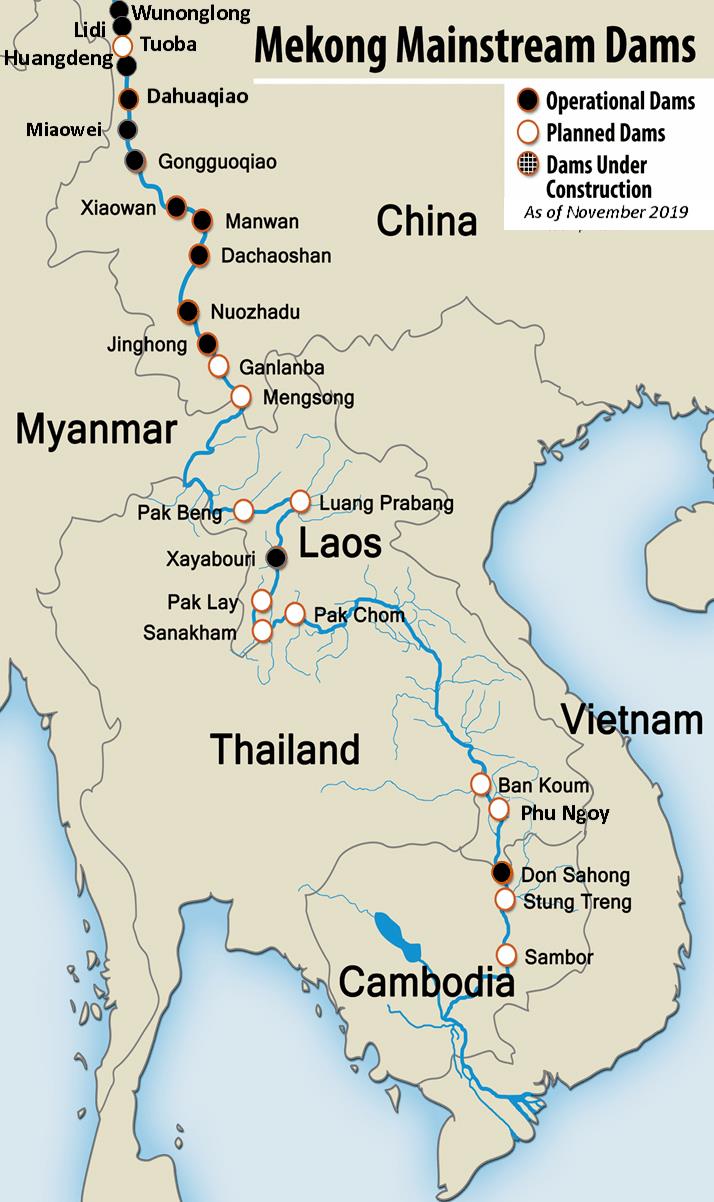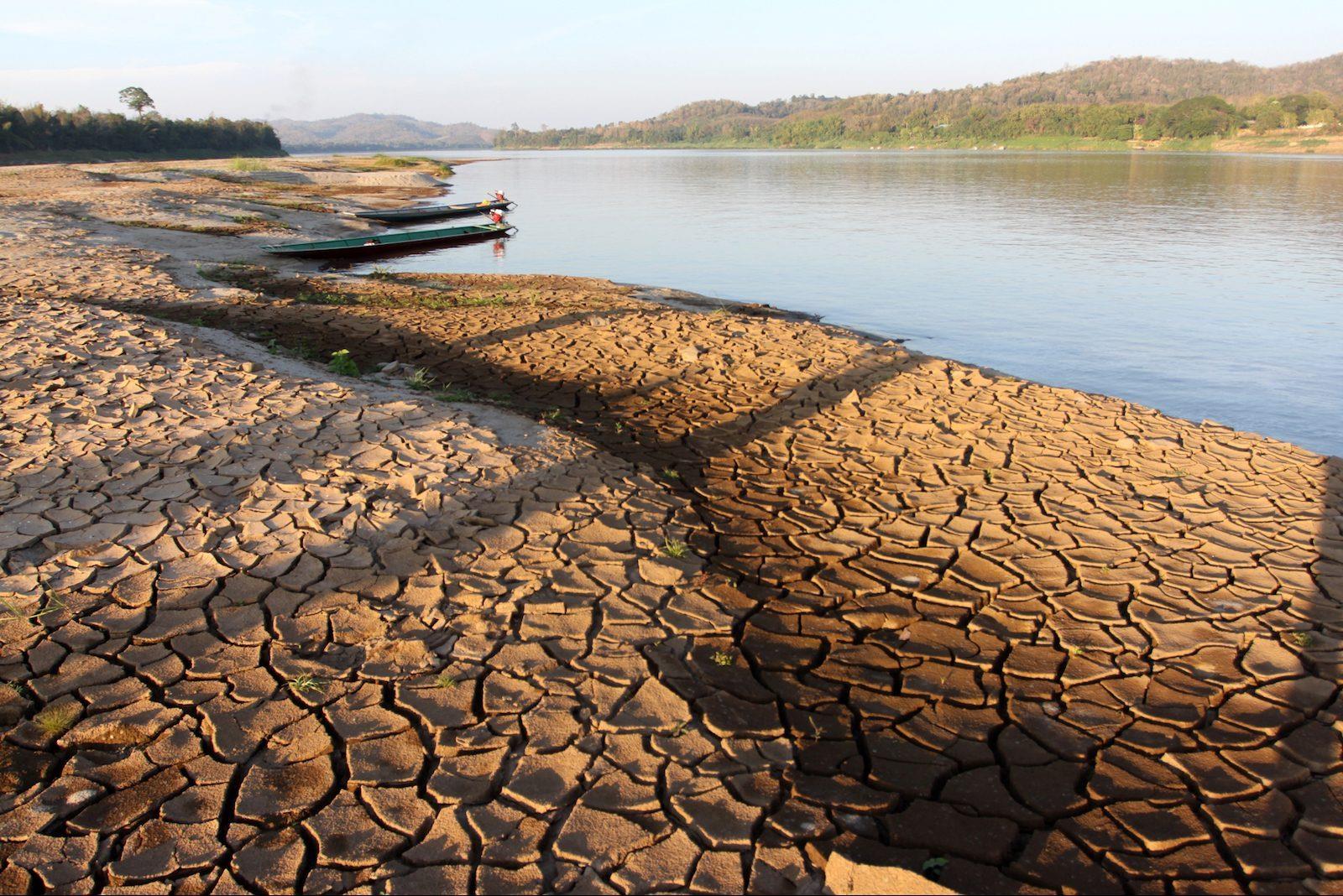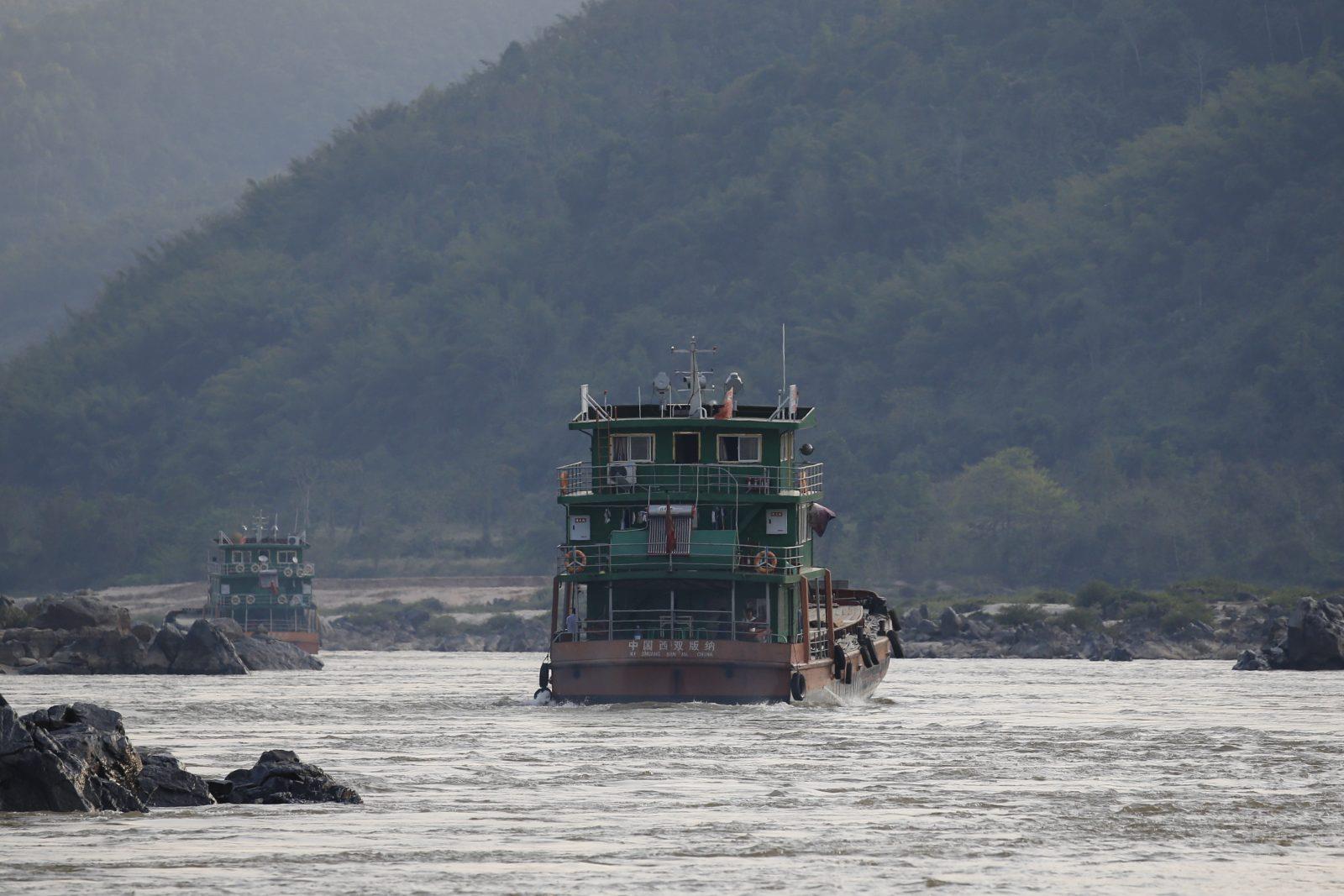(MENAFN- Asia Times) When China announced in early August a new US$6 million for new development projects in Myanmar, the sum was trifling in Beijing's wider $1 trillion global Belt and Road Initiative (BRI).
China's Foreign Ministry said the funds will be used for animal vaccine projects, agricultural development, science, disaster prevention and, surprisingly given the absence of foreign visitors amid a raging COVID-19 outbreak and Political crisis, tourism.
But while the funds are a rounding error in the financial context of the two sides' wider relationship, replete with multi-billion dollar plans for rail, road and port development, they represent a potential game-changer for Mekong nations including Myanmar.
The funds will be earmarked for projects under the Mekong-Lancang Cooperation (LMC) framework, China's rival answer to the Western-initiated and funded Mekong River Commission (MRC).
The MRC has existed since the late 1950s and works directly with the governments of Cambodia, Laos, Thailand, and Vietnam to jointly manage the river's shared water resources and sustainable development.
Lancang is the Chinese name for the Mekong River. The LMC was established in November 2015 and brings together China, Cambodia, Myanmar, Laos, Thailand and Vietnam, or all the riparian countries from the river's headwaters in Tibet to its exit in the South China Sea, a distance of nearly 5,000 kilometers.
The LMC explicitly excludes traditional Mekong nation donors including Japan and the United States.

The Xiaowan dam in China's southern Yunnan province on the Mekong. Image: Facebook
In July 2016, or less than a year after the LMC was formed, Carl Middleton and Jeremy Allouche, two Western scholars writing for the Italian journal the International Spectator, stated that“the countries sharing the Lancang-Mekong River are entering a new era of hydropolitics…[the LDC] proposes programs on both economic and water resource development, and anticipates hydro-diplomacy via China's dam-engineered control of the headwaters of the Mekong.”
That's the crux of the matter: China controls both the flow of water and development funds and there is very little downstream Mekong nations can do apart from cooperating with Beijing's ambitions and designs for the region.
There are at least 11 Chinese dams on the river's headwaters before it flows south and forms the border between Laos and Myanmar. And more are currently under construction.
Since China began constructing its cascade of dams in the early 1990s concerns have been raised in downstream Laos, Thailand and Vietnam about how water levels on the Mekong rise and fall widely when China opens and closes its dams.
On February 12 this year, water levels fell to particularly low levels that parched swathes of the river due to outflow restrictions from Chinese hydropower dams upstream, Reuters reported. Last October, Beijing agreed to provide year-round data on its dams and water flows but what has been released to date has been incomplete, according to reports.
Wide water flow fluctuations caused by China's upstream dams, Reuters reported,“affect fish migration, agriculture and transportation that nearly 70 million people rely on for their livelihoods and food security.”
Chinese Communist Party-controlled media columnists have reacted angrily to suggestions that it is behaving irresponsibly.

Graphic: Stimson Center
Hu Yuwei, a columnist at Chinese Communist Party mouthpiece Global Times, wrote on May 10 that China's“dam threat” is based on“weak evidence.”
He refuted“groundless claims” by outsiders and wrote that“drought downstream was mainly caused by reduced precipitation and extreme weather conditions.” China, Hu wrote, is“a responsible upstream neighbor” to downstream countries.
Others, however, see an emerging water war pitting China against downstream Southeast Asian nations that Beijing could leverage to push its wider agenda in the region, including controversial projects envisioned in its BRI.
Indian security analyst Brahma Chellaney has claimed that Beijing is using the Mekong's flow as a“weapon” to strengthen its power downriver. International Rivers, a Thailand-based NGO, has said the MRC-LMC rivalry has made the debate on the Mekong's future“more politicized and polarized.”
Indeed, the Mekong's region's geopolitics are intensifying as yet another theater in the rising geostrategic rivalry pitting the US and its regional allies against China.
On August 6, Japanese Foreign Minister Toshimitsu Motegi held a video meeting with Cambodia, Laos, Myanmar, Thailand and Vietnam to discuss what analysts see as countervailing development projects on the river.
The annual meeting was scheduled to take place in March but was postponed because of the February 1 coup in Myanmar.
Holding it too soon after the military takeover would have been seen as an endorsement of the coup, and Motegi notably urged Myanmar's junta to release people detained since the military takeover.
He also pledged medical support for the region on top of around 5.6 million doses of Covid-19 vaccines and $68 million worth of medical equipment including oxygen concentrators provided by Japan.
In 2020, four years after China established the LMC, Washington created the Mekong-US Partnership to expand the work of the Lower Mekong Initiative, an earlier forum created in 2009 to counter the spread of China's influence down the river and into Southeast Asia.

Water levels often run low on the Mekong River downstream from China dams. Photo: AFP Forum / Paritta Wangkiat
The partnership claims to have“improved the lives of hundreds of thousands of people in the Mekong region” and in 2020 expanded its cooperation and programs to address“emerging challenges” related to economic connectivity, transboundary water and natural resources management and non-traditional security, including issues related to health security, pandemic response and cyber security – a laundry list of issues emanating from China without specifically naming it.
On August 2, US Secretary of State Antony Blinken hosted the second ministerial meeting of the partnership and the first under the anti-China alliance-building Joe Biden administration.
Brian Eyler, director of the Southeast Asia and the Energy, Water, and Sustainability Program at the Washington-based Stimson Center think tank, was quoted in media on August 12 as saying,“the US emphasis on transparency and inclusivity as part of the Mekong-US Partnership is enabling productive outcomes in the Mekong region and decreasing China's accountability gap in its own backyard.”
To be sure, Washington's involvement on the Mekong is not new. The MRC is actually a legacy of Cold War-era rivalry between the US and Soviet Union. But the MRC has since become increasingly weak, ineffectual and anachronistic, hence the new US initiatives.
Initially known as the Mekong Committee, the MRC was established in 1957 under a statute endorsed by the United Nations, but conceived by Raymond Wheeler, a retired US lieutenant general who fought the Japanese in Southeast Asia during World War II.
The model was the Tennessee Valley Authority, one of president Franklin Roosevelt's grand New Deal schemes in the 1930s that built dams along the Tennessee River and brought electricity, irrigation and flood-control benefits to several US states.
But transplanting the idea to Southeast Asia – especially amid the instability of the Cold War and later the wars in Indochina – didn't achieve the same results.
China was never a partner to the MRC's forerunner, nor was Myanmar, as the move was then part of a wider strategy to unite the pro-Western regimes in Thailand, Laos, Cambodia and South Vietnam against communist China and North Vietnam.
Washington's new initiatives, on the other hand, have been constrained by a new geopolitical landscape where Laos and Cambodia are much closer to China than the US, and post-coup Myanmar is once again sliding back into China's orbit.
While the US and other Western countries have condemned political repression not only in Myanmar but also Cambodia and to a lesser extent even Vietnam, China raises no qualms in light of its own human rights record.
Then US Secretary of State Mike Pompeo accused Chinese companies of“exploitative practices” in the Mekong River, for which he blamed the China Communications Construction Company as a big offender. He also said the Chinese Communist Party was responsible for an increase in human, wildlife and drug trafficking in the region.
The Joe Biden administration is also putting emphasis on the Mekong-US Partnership, seen in US Vice President Kamala Harris' visits to Singapore and Vietnam earlier this month.

Chinese cargo ships sail on the Mekong near the Golden Triangle at the border between Myanmar, Laos and Thailand in March 2016. Photo: AFP
While in Singapore, Harris said that“our partnerships in Singapore, in Southeast Asia, and throughout the Indo-Pacific are a top priority for the United States.” She also spoke against China's excessive claims in the South China Sea, a message she repeated during her subsequent trip to Vietnam.
But the odds are arguably stacked against Washington on the Mekong. China is moving ahead faster and with more determination than the US in asserting its influence on Mekong River nations.
Because China sits at the river's headwaters and has shown its power to turn it off at will, the MRC, Mekong-US Partnership and Japan's initiatives seem destined to become sideshows in another rising contest for regional influence.
MENAFN05092021000159011032ID1102742275